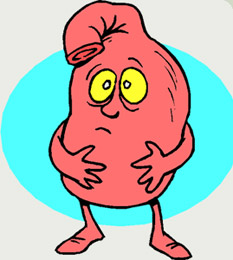
My child has a stomach ache...
what should I do?
Posted in General Health articles on March 18, 2012. Last modified on November 28, 2018. Read disclaimer.
You have a child and all of a sudden they stop eating or they complain about a feeling of fullness in the belly that hurts. What do you do? Is it dangerous to take a wait and see approach?
Fortunately, most causes of stomach aches in children are minor and can be treated at home.
The 3 most common causes of stomach aches in kids are:
1. Stomach "bug" (Gastroenteritis)
Meaning simply "inflammation of the gastrointestinal tract", gastroenteritis is something of a catch-all that can be caused by viral, bacterial or parasitic infections... including the flu.
Symptoms: Diarrhea and vomiting, cramping, fever, lack of interest in eating.
Possible Causes: Consuming contaminated food or drink, contact with someone else who is infected, not properly washing hands or dishes.
Suggested course of action: Normally, the cause of gastroenteritis will resolve itself within seven to 10 days -- whether with or without medical assistance. Because dehydration from vomiting and diarrhea is a concern, the child should drink plenty of fluids (even if it is just small sips at a time) to prevent dehydration and offer bland, light, healthy meals to replenish lost nutrients and electrolytes.
Note: As with the flu, many causes of gastroenteritis may be contagious. Blood in the stool or vomit are indicators that your child may have something more serious than just a normal "stomach flu."
+ Free Shipping & Returns on Eligible Items.
(*Amazon's Top 100 list updated hourly.)
2. Heartburn (gastroesophageal reflux disease, or GERD)
Though heartburn is often thought of as something that happens to adults, it can also be common among children. Actually, heartburn has nothing to do with the heart, but rather occurs when stomach acid leaks back up from the stomach to the esophagus and even the mouth.
Symptoms: Vomiting, foul taste in the mouth, persistent coughing, burning in the chest - most commonly after eating, bending over, exercising or lying down.
Causes: Until an infant is 1 year old, their digestive system is not fully developed, which may allow for this gastroesophageal reflux. Most of these cases will resolve themselves naturally. In older children, eating a "problematic" food, or too much of it, may contribute to the problem. Common offenders include acidic or spicy foods such as sodas, tomato products or citrus fruits or juices. Other triggers for GERD in children can include obesity, lying down or exercising too soon after eating, tight clothing.
Suggested course of action: Eliminate possible causes and/or treat with over-the-counter antacid or prescription medication.
3. Constipation:
Though we commonly think of "frequency of bowel movement" as being the defining factor of whether or not someone is constipated, what is considered "normal" can vary quite a bit by individual. The most important criteria of constipation is whether or not the stools pass easily!
Symptoms: Dry, hard or painful bowel movements. The "normal" ranges for stool frequency are:
- Newborn infants should have at least 1-2 bowel movements per day.
- From age 2 weeks to 2-3 years, bowel movements only every other day are not a cause for concern.
- While once-a-day is average for children, some may have a bowel movement 1-3 times every day while others may go only every other day and still fall within the "normal" range.
Causes: Not getting sufficient fiber in the diet and/or not drinking enough fluids. Inactivity, sudden change in routine, stress or medications. Also, a common cause among children can be resisting the urge to go to the bathroom.
Suggested course of action: Eating whole grain breads or cereals and high-fiber foods such as prunes, raisins, peas, beans, and other fruits and vegetables. Limiting consumption of fatty, greasy or sugary foods (milk and cheese can also be problematic for some). Encourage child to drink sufficient water or unsweetened juices. Also, encourage kids to stay physically active (since only one out of four American kids are currently getting the recommended amount of physical activity) and encourage them to take their time when at the bathroom. Other natural treatments may include, gently massaging the tummy and/or a warm bath to relax the sphincter muscles. Also, if the child has been on antibiotics, consider supplementing the diet with probiotics or yogurt.
While the above steps are important, in most cases they are more preventative measures. So, if these steps on their own are not enough to resolve a current case of constipation, the child may be given a stool softener (laxative).
Note: If, after attempting home treatment, regular bowel movements have not resumed within 48 hours for infants or 1 week for children ages 3 months to 11 years, contact a doctor. Chronic constipation or blood, grease or mucus in the stool, or foul smelling stool may be symptoms of more serious conditions or parasites.
What are more serious causes of stomach aches in children that we should be aware of?
Unfortunately, there are many serious health conditions that can cause stomach pain. Sharp pain in the lower right side of the stomach, for example, is a symptom of appendicitis which requires immediate medical attention. Other serious conditions that display as a stomach ache but merit medical intervention include poisoning, inflammatory bowel disease (which includes colitis and Crohn’s disease), ulcers, pneumonia, kidney or urinary tract infection and irritable bowel syndrome.
Just a few signs that should alert you to seek immediate medical attention include: if the location of the pain moves, if the child refuses to drink, urination stops or a rash appears.
Still uncertain on whether or not you should seek medical attention for your child's discomfort, visit the WebMD Symptom Checker for further guidance.

 How happiness may improve health
How happiness may improve health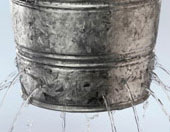 Main causes and symptoms of dehydration
Main causes and symptoms of dehydration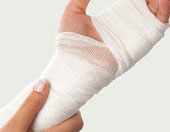 Preventing falls in the home
Preventing falls in the home Common health risks in cosmetics
Common health risks in cosmetics Avoiding stress and depression during the holidays
Avoiding stress and depression during the holidays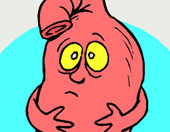 Common causes of children's stomach aches
Common causes of children's stomach aches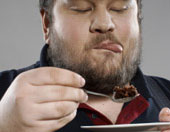 Tips for controlling sugar cravings
Tips for controlling sugar cravings